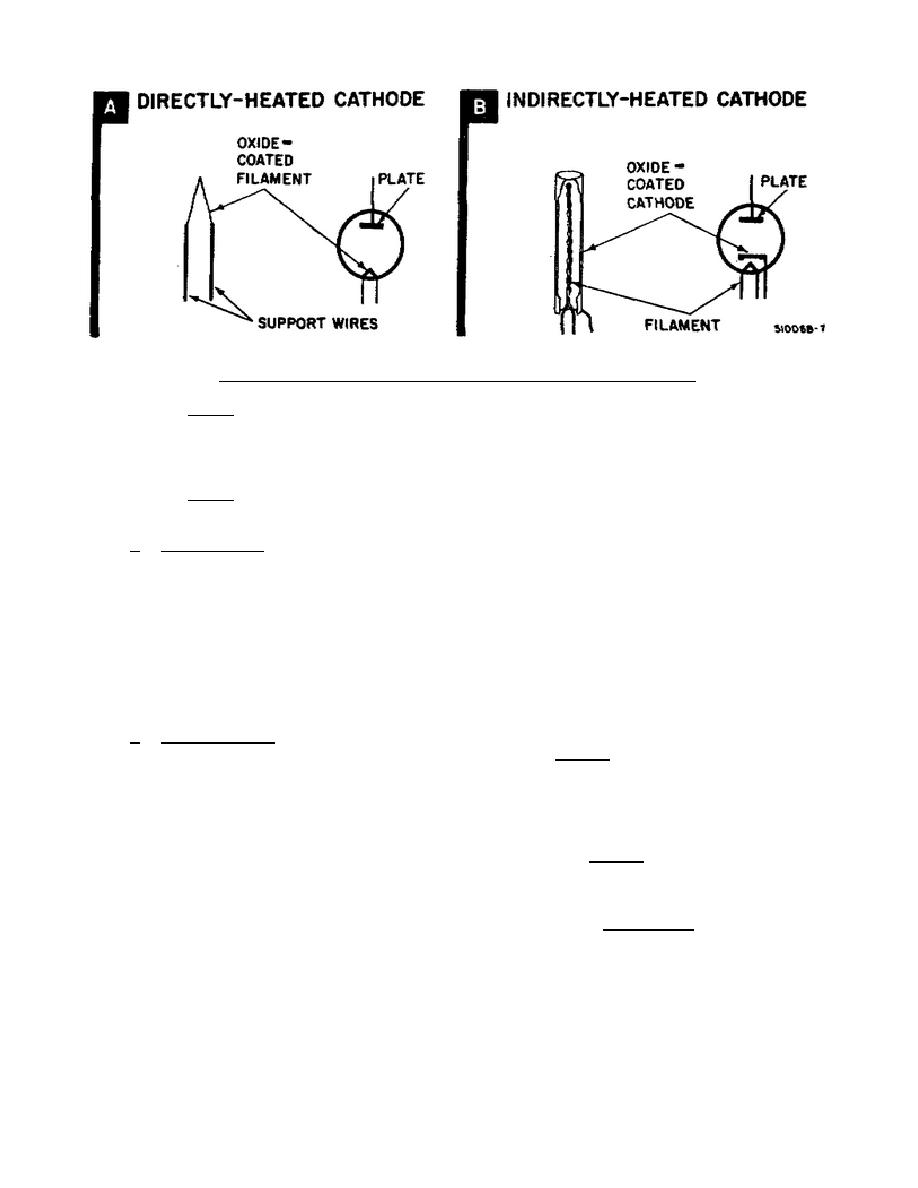
Figure 1-1.
Directly and indirectly heated cathodes.
(2) Plate.
The plate collects the electrons emitted from the cathode.
This is caused by making the plate positive with respect to the
cathode.
The movement of electrons from the cathode to the plate is
called the plate current.
(3) Grids.
Grids are made of wire and are used to control the flow of
electrons from the cathode to the plate.
b. Diode Tubes.
A diode tube has only two electrodes, cathode and plate.
When the plate of the diode is made positive with respect to the heated cathode,
the plate attracts the electrons, causing current to flow between cathode and plate
as shown in figure 1-2.
The only control over this current is the difference of
potential between the electrodes.
If the plate is made negative with respect to
the cathode, no current can flow through the tube. Since current can flow in only
one direction, from cathode to plate, the current is said to be unidirectional. If
Ebb in A of figure 1-2 is replaced by an ac source, the tube will conduct on the
positive half-cycle (plate positive) but not on the negative half-cycle (plate
negative). The diode tube changes the ac wave to dc.
c. Triode Tubes.
When a wire mesh, known as a control grid, is placed
between the cathode and plate, the tube becomes a triode, or three-element tube.
The effect is to reduce the capacitance between plate and cathode and to provide a
means for controlling plate current. Electrons moving from cathode to plate must
pass through the control grid.
If a negative voltage, called bias, is applied
between the control grid and cathode, the grid will tend to repel the electrons and
reduce current flow to the plate.
By making the grid sufficiently negative,
current can be stopped completely, a condition known as cutoff. If a positive bias
voltage is applied between the control grid and the cathode, current through the
tube will increase.
If the grid becomes sufficiently positive, current will
increase-to the point that the tube will be producing all the current that it is
capable of producing.
This condition is known as saturation.
Cutoff and
saturation are the two operating extremes of an electron tube.
309 L1
3


 Previous Page
Previous Page
